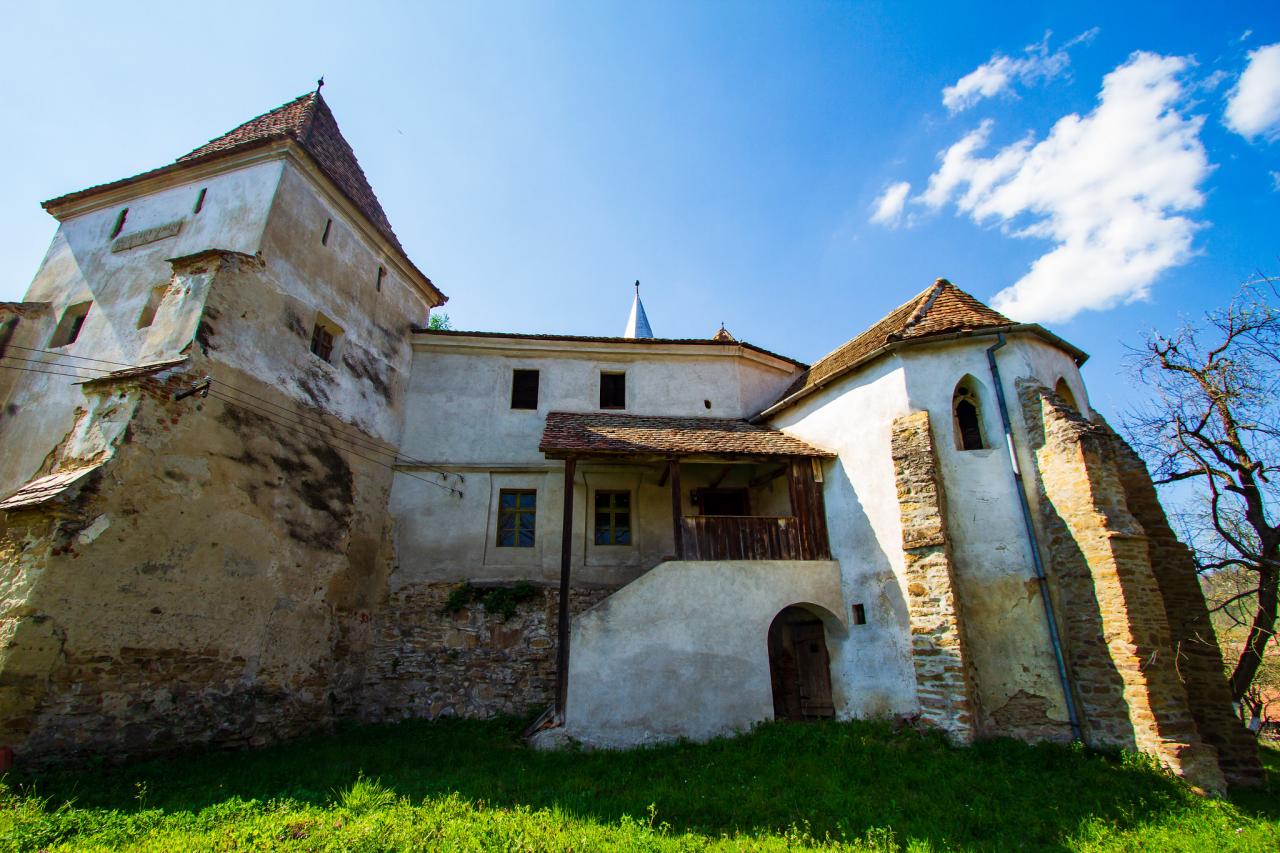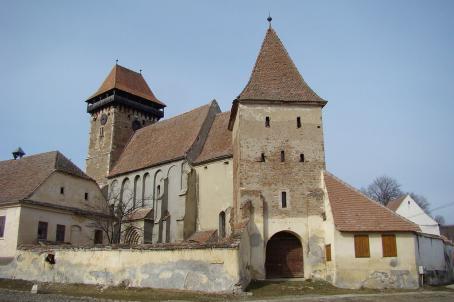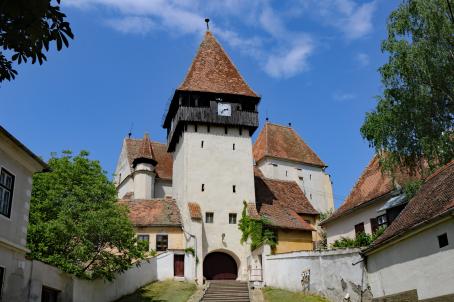Curciu Fortified Church
The church in Curciu has remained almost unchanged since its construction in the beginning of the 15th century. The remarkable value of the three-aisle basilica with polygonal chancel lies in its outstanding stone masonry. In the chancel the well preserved mullioned windows with tracery can be admired as well as the typical Gothic windows in the tower. The sculptures ornamenting the portals, tower, windows, buttresses, as well as the capitals, keystones, sedilia and the door of the sacristy date back to around 1427. At the beginning of the 19th century the side aisles were heightened, thus obtaining a cross section of a hall church. At the same time both the main nave and the side aisles were covered with a flat, stuccoed ceiling. The tower’s defence level was demolished and replaced in 1913 by the present, with zinc sheet covered spire. Today the ring wall with the gate tower initially used as entrance, as well as a Gothic chapel integrated in this wall still stands as part of the fortified ensemble.
About this building
For more information visit on this building visit https://kirchenburgen.org/en/location/kirtsch-curciu/






